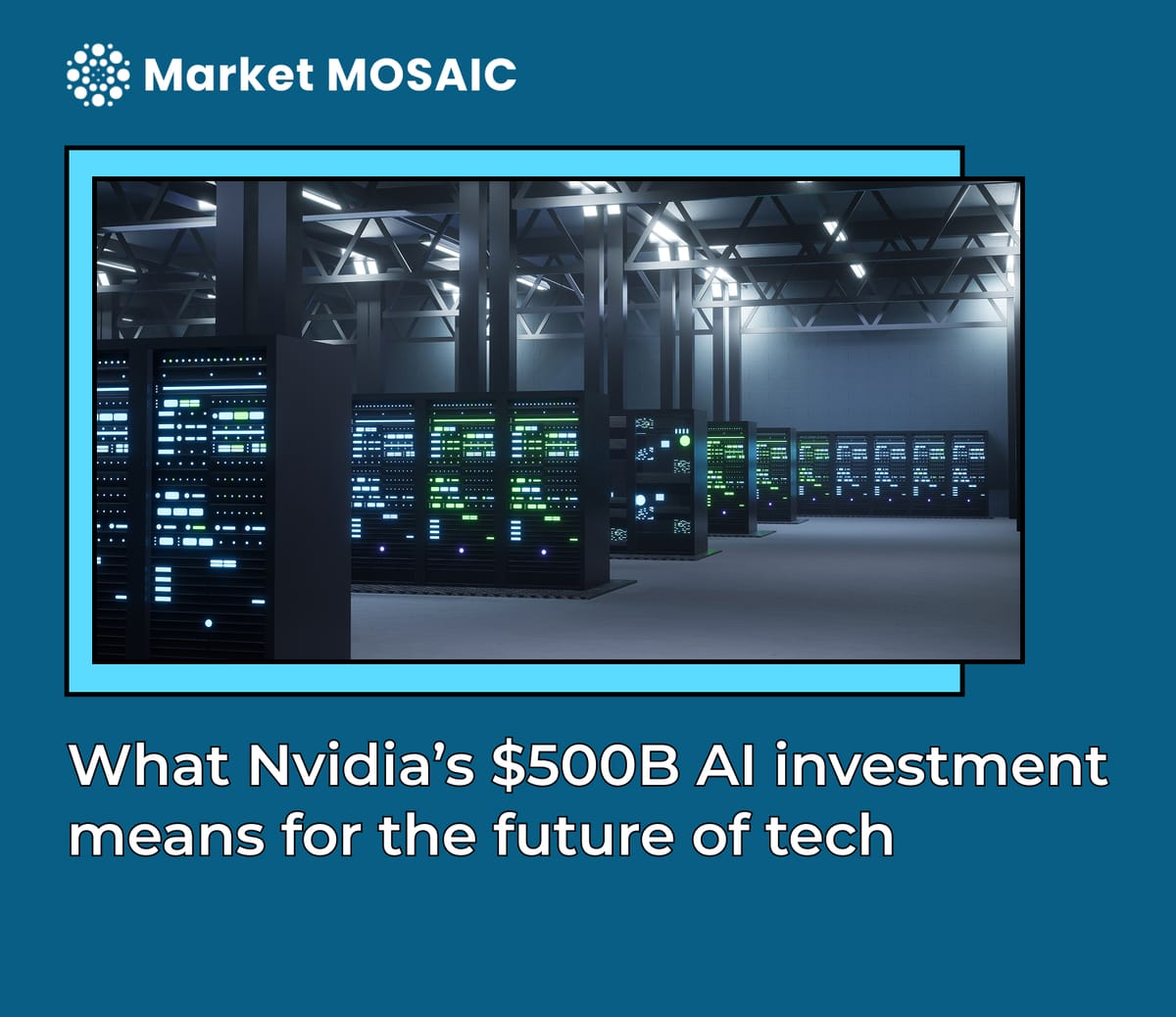What Nvidia’s $500B AI investment means for the future of tech

Nvidia is committing $500 billion to manufacture AI supercomputers entirely within the United States over the next four years. This is not just a headline-grabbing number. It is a clear signal that the battleground for artificial intelligence supremacy is shifting from code to concrete.
With new production facilities planned in Arizona and Texas, Nvidia is taking a decisive step to localize key components of its AI ecosystem. This move is about more than just tightening the supply chain. It is about national strategy. In a time when compute power is as critical as oil once was, owning the infrastructure that powers intelligence becomes the ultimate advantage.
From global scale to infrastructure supremacy
To grasp the weight of this investment, consider the global data center landscape. The United States leads by a wide margin with 3,648 data centers, compared to 419 in Germany and 412 in the United Kingdom. Nvidia’s expansion will only deepen that lead, reinforcing America's already dominant position in AI infrastructure.
But what is most notable is how the strategic value of these facilities has evolved. Data centers are no longer just back-end utilities. They are now national assets that underpin innovation, economic resilience, and digital sovereignty. Nvidia’s decision positions the U.S. as both the brain and the backbone of the global AI economy.
Sustainability emerges as a silent disruptor
As AI’s energy demands soar, sustainability is quickly becoming a differentiator. Brazil, for example, ranks just 12th globally in total data centers but has a unique advantage. São Paulo alone hosts 58 facilities, more than entire countries like South Korea and Israel. The reason? Brazil’s abundant renewable energy capacity. In an era where energy transparency and carbon impact are becoming competitive concerns, access to clean, reliable power is redefining which regions win in AI.
According to a recent market forecast, the global data center construction market is set to reach $214 billion, led by North America and the Asia-Pacific region. Nvidia’s decision to build domestically aligns with this growth and positions the company to benefit from state and federal incentives focused on sustainable and secure infrastructure.
Infrastructure is now strategy
For business leaders, the message is clear. The AI race is no longer just about training the best models or scaling cloud capacity. It is about who can build, power, and control the ecosystems that support intelligent technologies.
Founders and CEOs must rethink what it means to scale. Compute power is becoming more finite, more expensive, and more regulated. Infrastructure planning has moved from the IT department to the boardroom. And companies with access to clean energy or stable data regulations may find themselves with a sudden and lasting strategic advantage.
Building the future from the ground up
Nvidia is not just preparing for the next generation of AI. It is defining the conditions under which that generation will emerge. The company is betting that owning the infrastructure—geographically, energetically, and strategically, will be the key to staying ahead.
As AI accelerates, the real edge will belong to those who control not just the algorithms, but the environments they run in. The future of intelligence is being built from the ground up. Quite literally.





